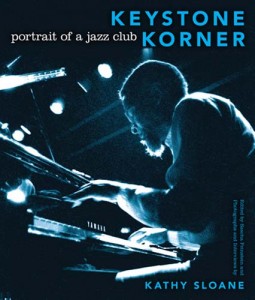Washington Cucurto is the nom de plume of Argentinian writer Santiago Vega; his 2008 novel entitled 1810. La revolución vivida por los negros (Emecé) is, among many other things, an exercise in alt-historical fiction. This genre was the subject of a recent article in the New Yorker by Thomas Mallon. Usually, these kind of books are aesthetically middlebrow and pretty earnest. They ask questions like: what if the South had won the Civil War? Or Germany World War II?
 Cucurto’s book is not earnest, and asks slightly different questions, most of them about José de San Martín, father of Argentina’s independence from Spain. To wit: what if San Martín had been what we would call today a sex addict? What if the revolutionary Primera Junta regularly held explosive orgies in the venerable cabildo–literally explosive, so much so that the building blew up and San Martín had to round up the loyal Africans he had brought over as slaves, and then freed, to rebuild the structure? What if San Martín bastard son led an army of Peruvians (who nevertheless talk like 21st century Argentinians, like everyone else in this book) against his father’s troops, in an Oedipal struggle?
Cucurto’s book is not earnest, and asks slightly different questions, most of them about José de San Martín, father of Argentina’s independence from Spain. To wit: what if San Martín had been what we would call today a sex addict? What if the revolutionary Primera Junta regularly held explosive orgies in the venerable cabildo–literally explosive, so much so that the building blew up and San Martín had to round up the loyal Africans he had brought over as slaves, and then freed, to rebuild the structure? What if San Martín bastard son led an army of Peruvians (who nevertheless talk like 21st century Argentinians, like everyone else in this book) against his father’s troops, in an Oedipal struggle?
You can already see that Cucurto is not much interested in the too-clever tricks of the alt-history crowd. Sure, an orgy explodes city hall, but San Martín rebuilds it the next night and history goes on as before. And San Martín did in fact battle an army from Peru–it just wasn’t led, as far as we know, by his illegitimate son. I do like the suggestion that San Martín escaped to Africa–the land he truly loves–where he became the progenitor of all that continent’s 20th century dictators.
No, mostly this is a Rabelaisian tale of wild imagination in which rewriting history is just part of the baroque concatenation of ingredients. El realismo atolondrado, he calls it. But it did have me returning to Tulio Halperin’s history, Halperin being the Argentinian historian and Berkeley professor from whom I learned the real history decades ago as an undergraduate. To be sure, early on, Cucurto and Vega are discussing their project for an alternative history, and the latter suggests to the former that he consult the same source:
“Cucu, no seas boludo, agarrate un libro de Halperin Donghi y reescribilo.”
–¡Pero Halperin es más complicado que Proust!”
Which is not so wide of the mark.
Every book I read in Spanish introduces me to a new set of vocabulary, but this one is especially wild: tagui, choborra, jermu, garchar, partusear (it helps to know the French partouze), turro, emperribombar, chanta… None of them in my dictionary, and most of them probably not fit for a family-friendly blog.


 Cucurto’s book is not earnest, and asks slightly different questions, most of them about José de San Martín, father of Argentina’s independence from Spain. To wit: what if San Martín had been what we would call today a sex addict? What if the revolutionary Primera Junta regularly held explosive orgies in the venerable cabildo–literally explosive, so much so that the building blew up and San Martín had to round up the loyal Africans he had brought over as slaves, and then freed, to rebuild the structure? What if San Martín bastard son led an army of Peruvians (who nevertheless talk like 21st century Argentinians, like everyone else in this book) against his father’s troops, in an Oedipal struggle?
Cucurto’s book is not earnest, and asks slightly different questions, most of them about José de San Martín, father of Argentina’s independence from Spain. To wit: what if San Martín had been what we would call today a sex addict? What if the revolutionary Primera Junta regularly held explosive orgies in the venerable cabildo–literally explosive, so much so that the building blew up and San Martín had to round up the loyal Africans he had brought over as slaves, and then freed, to rebuild the structure? What if San Martín bastard son led an army of Peruvians (who nevertheless talk like 21st century Argentinians, like everyone else in this book) against his father’s troops, in an Oedipal struggle?

